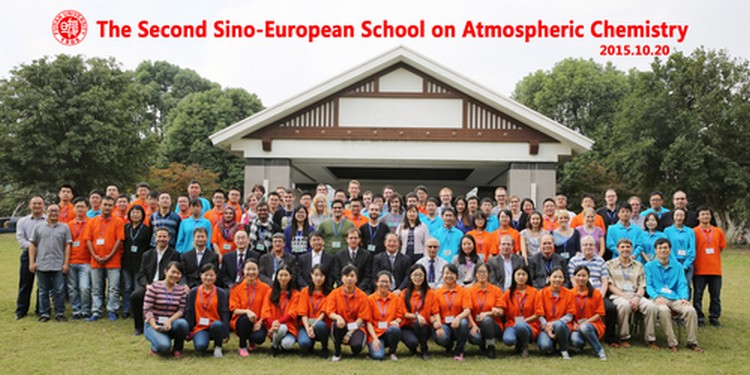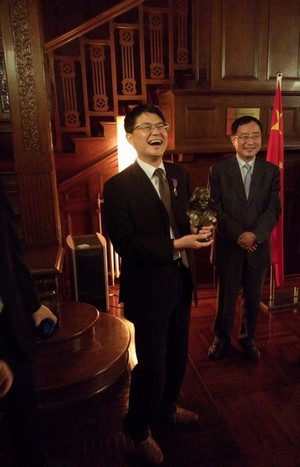
|
|
|
|
SESAC 2
Prof. CHEN Jianmin French Academic Palms Ceremony at the French General Consulate (Shanghai, October 29th, 2015)
BACKGROUND and OBJECTIVES In the last two decades it has become increasingly clear that climate change and air quality are key societal issues that have to be addressed by many scientific disciplines, which emphasizes the need for multidisciplinary education. It is therefore the main aim of this summer school to help young scientists with the necessary information and provide access to state-of-the-art techniques. We have identified exciting scientific issues that will be presented by world-leading experts. We will thus ensure the dissemination of the best available science to our young generation of scientists and promote the start of their scientific careers. When considering environmental issues, the atmosphere plays a central role as a highly oxidizing medium, which is linked to the water cycle, climate and to the biosphere including human beings. Therefore changes in the atmospheric composition directly affect the Earth System through air quality, the radiation budget, shielding from ultraviolet radiation, weather events, climate and the water cycle, i.e. affecting all primary conditions for life on earth. The second Sino-European School on Atmospheric Chemistry (SESAC2) will scientifically address atmospheric chemistry basics in the 21st century as well as important current questions such as the routes for organics oxidation in the atmosphere, secondary organic aerosol formation and properties, dust physical chemistry, exchanges at interfaces (soil, oceans, etc.) and the implications to the atmosphere (air quality and climate change). In this school several "hot" topics will be addressed by the lecturers, in addition to basic knowledge needed to understand these topics. The main focus points to be discussed are: (A) Oxidative capacity of the atmosphere, secondary aerosols and multiphase chemistry; Both in Europe as well as in China, these aspects are intimately linked to the quality of the air and are subject to strong scientific research and discussion. (B) Mineral dust and other aerosol particle chemistry and impacts; Besides the Sahara, the deserts in China are globally one of most important mineral dust sources that have a strong impact on climate, air quality and health. (C) Surface/Air interface, reactive and the greenhouse gas emissions. Generally, global change and its interaction with atmospheric chemistry is a matter of huge concern for the highly industrialized societies but also to those heavily developing like China. The above themes have been selected to address, on the one hand, scientifically essential themes in addressing issues at the forefront of research and affecting both China and Europe not only with regards to specialized natural science but also the societies being involved. Thus, we wish that SESAC2 will initiate the formation of a new generation of scientists aware of the scientific subjects and the related societal issues. Indeed, air pollution in China is certainly a global issue, and not merely for the local population, but with high specificities (as a result for example of the pervasiveness of deserts, of very high emissions, etc.) on which European know-how, should fully be mobilized to reach the objective of this initiative: Training of a new generation of Chinese and European scientists to be fit to tackle the coming demands in atmospheric chemistry in the context of global change. The school duration will be two weeks long in October 2015, and involves lectures and practical training exercises using educational computer programs and e-learning tools. The summer school will thus provide Chinese and European students with unique opportunities in an educational environment that is not available at any single university or other institution. It is planned to select 60 PhD students and post-docs (at their entry in the field of atmospheric sciences) based on applications. It is planned to select 2/5 European, 2/5 Chinese and 1/5 international candidates. Having 1/5 of international students will give to the school another dimension as it will allow new networking between the students and therefore facilitate the building of the International Research Area.
|
| Online user: 1 | RSS Feed |

|


